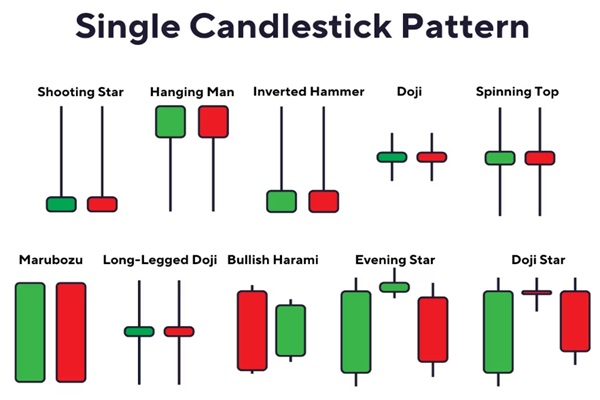Intraday trading is a discipline where precision and timing often make the difference between consistent gains and frustrating losses. Markets move in predictable cycles throughout the day, with distinct periods of heightened activity, consolidation, and closing volatility. For traders who rely on technical setups, momentum plays, or volume-based strategies, understanding when to act can be just as crucial as identifying what to trade. By aligning your entries and exits with the market's natural intraday rhythm, you can sharpen your edge and avoid costly mistakes driven by mistimed trades.
Market Open Window (09:15–10:00 / 10:30)
 The initial 45 to 75 minutes after the market opens are among the most volatile periods of the entire trading day. Traders who are well-prepared with pre-market analysis often find their best setups during this window. The high volume is driven by a convergence of overnight news digestion, global cues, institutional flows, and the execution of market and stop orders.
The initial 45 to 75 minutes after the market opens are among the most volatile periods of the entire trading day. Traders who are well-prepared with pre-market analysis often find their best setups during this window. The high volume is driven by a convergence of overnight news digestion, global cues, institutional flows, and the execution of market and stop orders.
Why It Matters for Traders:
Price Discovery: The opening period sets the tone for the trading day. Gaps and large early movements help define key support and resistance levels.
Volatility-Driven Opportunities: Sharp price action can be advantageous for breakout traders or scalpers using momentum strategies.
News-Driven Moves: Overnight economic data, earnings reports, or geopolitical events tend to be priced in immediately after the open.
Practical Tip:
Wait for the first 5–15 minutes to settle before initiating positions, especially if you are new or trading with higher leverage. False breakouts are common in the opening rush.
Mid-Morning Stability (10:00 / 10:15 – 11:30)
As the market digests the initial volatility, it often transitions into a more stable trend or range-bound movement. This mid-morning phase is ideal for traders seeking clearer technical setups with lower whipsaw risk.
Characteristics of the Time Block:
Emerging Intraday Trends: Strong stocks or indices may begin to form consistent directional moves.
Better Risk–Reward Ratios: Entry points with defined stop-loss levels are easier to identify.
Reduced Spread and Slippage: The price action is more settled, improving execution for limit orders.
Strategy Focus:
This is a prime time for trend-following traders who use tools like VWAP, Fibonacci retracements, or moving average crossovers. Position size can be increased moderately as clarity improves.
Midday Calm (11:30 – 14:30)
Often referred to as the "lunch lull," this segment of the day is characterised by a noticeable dip in volume and momentum. Traders frequently observe choppy movement, false signals, and indecisiveness in price action during this period.
What Traders Should Know:
Low Liquidity: With institutions taking a step back, price movements can become erratic and non-directional.
Range-Bound Action: Sideways consolidation is common, leading to potential breakout setups later in the day.
Discipline Over Activity: This time requires restraint more than aggressiveness.
Tactical Insight:
Unless you are executing a mean-reversion or consolidation breakout strategy, it may be wise to sit out this session or monitor existing positions with tight trailing stops.
Closing Hour Surge (14:30 – 15:30)
 As the trading day nears its end, volume picks up again, often leading to sharp moves in either direction. This period is crucial for active traders aiming to square off positions before the close.
As the trading day nears its end, volume picks up again, often leading to sharp moves in either direction. This period is crucial for active traders aiming to square off positions before the close.
Reasons for the Volatility:
Position Adjustments: Institutions and large funds make adjustments based on daily performance or portfolio balancing.
Short Covering or Breakdowns: Intraday trends often reverse or accelerate during the final hour.
Retail Momentum: Retail traders chasing end-of-day rallies or falls further fuel the volatility.
Trade Setup Focus:
Momentum scalping, VWAP reversions, and last-hour breakout trades can be very effective here. Maintain a fast finger and clear exit rules as price action can shift quickly.
Square-Off Deadline (≈15:15 – 15:30)
In markets like India, intraday positions must be mandatorily squared off by a broker-defined cut-off time—usually between 15:15 and 15:25. This creates an artificial but significant closing frenzy that impacts pricing behaviour in the final minutes.
Key Implications:
Auto Square-Off Risk: Failure to exit positions manually may result in poor exit prices or slippage.
Increased Spread: Bid-ask spreads widen as liquidity providers prepare to shut down for the day.
Execution Speed Critical: Manual control and execution are vital to avoid unnecessary losses.
Suggested Practice:
Close positions a few minutes ahead of the broker's square-off deadline. Avoid initiating new trades in this time block unless it's part of a pre-planned strategy with very tight control.
Final Thoughts: Timing as a Tactical Edge
For intraday traders, mastering the clock is as important as mastering the chart. The ebb and flow of market activity throughout the day create distinct windows of opportunity. Knowing when to trade is just as vital as knowing what to trade. By aligning your strategy with the natural rhythm of the trading day, you gain a structural advantage over market participants who operate on guesswork or impulse.
Remember—every successful trader builds not just a setup strategy, but a time strategy. Be aware, be adaptive, and above all, be disciplined.
Disclaimer: This material is for general information purposes only and is not intended as (and should not be considered to be) financial, investment or other advice on which reliance should be placed. No opinion given in the material constitutes a recommendation by EBC or the author that any particular investment, security, transaction or investment strategy is suitable for any specific person.



 The initial 45 to 75 minutes after the market opens are among the most volatile periods of the entire trading day. Traders who are well-prepared with pre-market analysis often find their best setups during this window. The high volume is driven by a convergence of overnight news digestion, global cues, institutional flows, and the execution of market and stop orders.
The initial 45 to 75 minutes after the market opens are among the most volatile periods of the entire trading day. Traders who are well-prepared with pre-market analysis often find their best setups during this window. The high volume is driven by a convergence of overnight news digestion, global cues, institutional flows, and the execution of market and stop orders. As the trading day nears its end, volume picks up again, often leading to sharp moves in either direction. This period is crucial for active traders aiming to square off positions before the close.
As the trading day nears its end, volume picks up again, often leading to sharp moves in either direction. This period is crucial for active traders aiming to square off positions before the close.






















